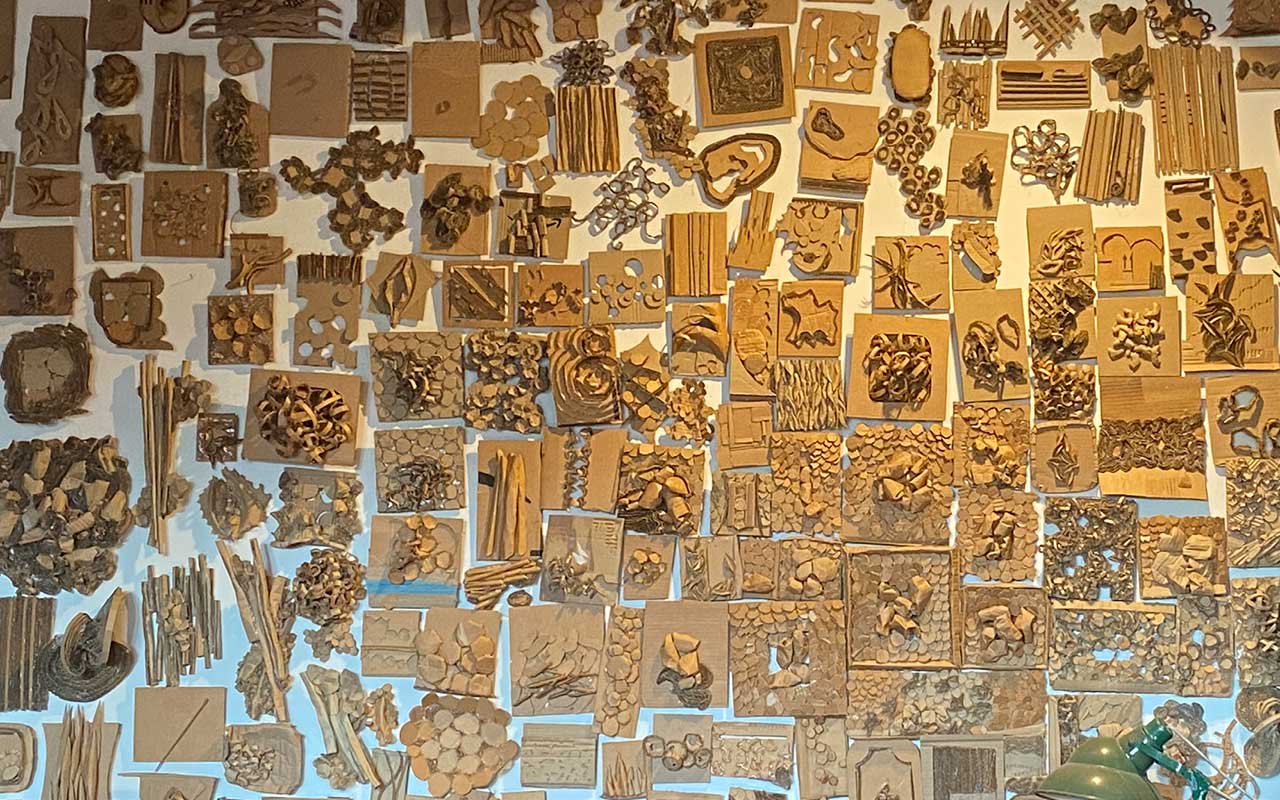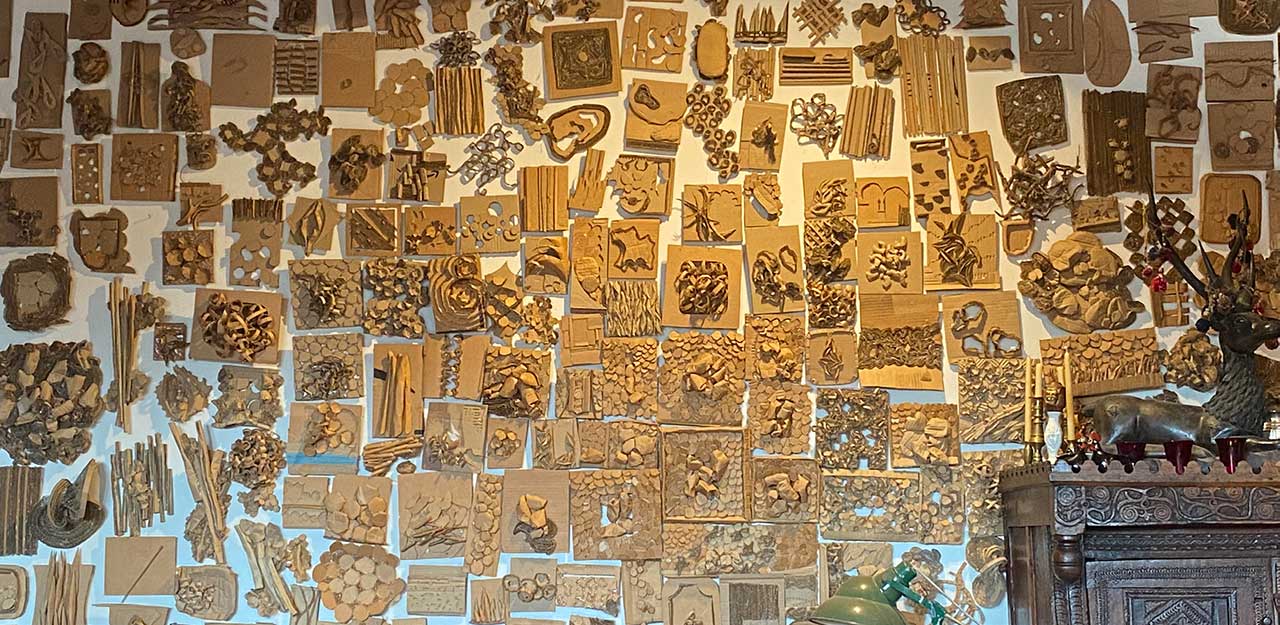Featured Artist

License to Play
Walking into the Re Institute in Millerton, NY, during exhibition hours you’re likely to find artist and founder/director, Henry Klimowicz mingling with visitors and enthusiastically explaining the current exhibition. The gallery, located in Klimowicz’s studio in a former dairy barn sits just north of the village of Millerton, and it exists in many ways as an outgrowth of his unique vision of artistic process. In many ways, Henry is the Re Institute.
An art ecosystem
Located on Boston Corners Road among picturesque rolling hills, shoulder high with corn in the late summer, the Re Institute is an art laboratory of sorts, or a place where finished contemporary art is exhibited but also a place where artists connect with one another and intersect over shared interests. Those who know Henry credit him with building a supportive network of art enthusiasts in this region. He has done studio visits at ChaShaMa in Pine Plains and has frequently collaborated with LABspace in Hillsdale. Aside from fomenting an upper Hudson Valley art ecosystem, Klimowicz believes artists reap unique rewards from deliberate exhibition. Because if its location and unique dimensions, the Re Institute is the test lab for this idea.
Klimowicz seeks to exhibit artists for whom the public display of their art hastens some organic creative development for the artist. Sometimes this takes place long after the labor of art making has been completed. An exhibition in the Re Institute is an intentional collaboration between artist and gallerist with the aim for the artist to learn something about their work through its presentation. This idea – of ongoing exploration of the creative space between the art and the artist – is one of the guiding ideas behind the Re Institute.
For Klimowicz, himself an accomplished sculptor, though an artist created the work and determined when it was finished, there is much more to the artistic journey for the creator. What can be learned through observation of completed work, or the exhibition of fragments of a body of work produced over a span of many years holds great promise for both artist and viewer. How art interacts with the exhibition space, and how humans respond to the experience make up the central dynamism of his gallery. Henry hosts three to five exhibits a year between the months of April and October, usually two artists at a time or occasionally, a solo show. Because of its location, design and intimacy, viewers can’t help but thoroughly engage with the art.
The Re Institute gestalt
I learned about the Re Institute and its mission in conversation with Henry in his living room, where he showed me work he’d created during the pandemic. His medium is cardboard, which he uses to sculpt intricate pieces with a utility knife and hot glue gun. He told me he likes the humility of cardboard; its familiar and functional qualities allow it to be transformative as a material. I saw this in action – lowly cardboard scraps made into stunning abstract wall hangings as well as delicately rendered dioramas. His large-scale work has been exhibited in the Berkshire Museum and at The Wassaic Project in the past. New work I saw on our visit consisted of diminutive square cardboard sculptures emanating outward in concentric rings. As new sculptures are added, a wall of his living room becomes covered with a patchwork of monotone squares that look from a distance like a cardboard-colored quilt in bas-relief. Klimowicz told me he was “testing pattern ideas to understand the larger piece.”
This kind of testing gets at the heart of the Re Institute gestalt. Klimowicz seems as interested in process as he is in product, both in his own work and work he selects for exhibition. He told me about his unique criteria for artists to show their work. First and foremost, they must visit the space before exhibiting. And then, they must come to the Re Institute with creative intent, or a willingness to allow that an exhibition here will advance an individual artistic journey in some way.
As I listened to Klimowicz explain his mission, he clarified that his goal is not to sell paintings for a lot of money, or garner review attention from art critics for shows he stages. His goal is for the Re Institute to play a role in how an artist comes to terms with his or her art through exhibition. He insisted he’s not “judging artwork” but providing a space for purposeful sharing of artwork. He gets to know the artists he shows, and exhibitions are a collaborative process.
A license to play
To illustrate his point, Henry spoke to me about a 2015 Judy Pfaff show at the Re Institute. Pfaff, celebrated sculptor, MacArthur Fellow, and teacher at Bard College presented her work at Re Institute following a high-profile exhibition at a major gallery. Upon installing her work at Re, she moved in an unscripted way – without first mounting and measuring the dimensions in her studio. Klimowicz was struck with the glee and spontaneity with which she went about installing her work, how much she enjoyed the process. Reflecting on this, Klimowicz feels he gives artists like Pfaff and others “license to play” in his exhibition space. By facilitating an open invitation for artists to have fun and experiment, he invites artists to be open to what can be learned and enjoyed through installation and exhibition. In his words, “Just because an artist saw the work of a baby plant as it grew doesn’t mean they understand it as a finished fruit.”
Pareidolia
This idiosyncratic curatorial style makes exhibitions at Re unique. In a somewhat subversive way, it draws both artists and viewers who are looking for a more dynamic gallery experience, one rich with the potential for discovery and understanding.
In keeping with Klimowicz’s vision, the Re Institute will present the work of Tom Burckhardt in a solo show beginning September 3. Burckhardt has produced work in various oeuvres in his career and has a history of challenging ideas of pure abstraction in painting. He has made installations as well as a series of works painted on vintage book covers; he’s also made ink-on-paper works of landscapes and seascapes using digital images.
The work Burckhardt will share in this show seems well suited to the Re Institute’s exhibition model. The show will include large diptych paintings he created years ago but which he felt didn’t get a proper showing in the small San Francisco gallery that originally exhibited them. He’s curious about seeing them in a new venue.
Burckhardt explores a big idea that holds interest for him in this series. Pareidolia, a phenomenon made famous by the Herman Rorschach and his inkblot test is a psychological concept where human imagination instinctively looks for a defined pattern in abstract images. Burckhardt likened this phenomenon to the tendency to animate or see figurative images such as a face in the clouds or a dragon on a cliff. In this series, he’s exploring “the space between figuration and abstraction” as he creates his diptychs in a very deliberate way.
He begins with a halved panel on one side of the canvas; the other panel is left blank at the start. Burckhardt paints the first panel in an intuitive and improvisational way, seeking something in the abstraction. He works in oil, mixing color as he’s inspired, occasionally using a roller to cover the half canvas until he determines the panel is finished.
Then, he reverse-engineers the adjacent panel to match the first panel but goes about this in a directed and clinical way, executing it to mirror the first panel, doing this somewhat imperfectly. By working on two panels in separate sessions, and then uniting the two panels into a whole, Burckhardt presents a very strong first impression of a symmetrical image split down the middle. Upon closer examination however, the viewer notices that the mirror panel on the right doesn’t quite sync up with the left panel – there are subtle differences in color and line between the two panels. They are similar but inexact, yet they create a symmetry where the whole painting suggests figuration.
Burckhardt told me this series captures an idea he’s been exploring for while and it’s one that’s well-suited to the Re Institute. He said viewers “need time and space to fully appreciate the energetic but static energy of symmetry.” These paintings will make a strong graphic impression from a distance but will demand closer examination of technique up close. The final paintings are themselves a bit of a mystery to the artist; he said he didn’t know what kind of image the symmetry would collect in its final form upon making them. Burckhardt will get his chance to see come September, when he and viewers will get to see his large-scale diptychs hung from the walls of the upstairs gallery at the Re Institute. The show will also display of 15 smaller works on paper in the adjacent gallery where some of these nascent ideas were tested.
As summer turns into fall and we witness the subtle change in seasons, making time and space on one of these fall Saturdays for the Tom Burckhardt show at the Re Institute will be a perfect way to mark the end of summer exhibition season in the upper Hudson Valley. Seeing innovative contemporary art that explores symmetry without distraction seems in keeping with observing the seasonal evolution of the natural world. The work is visually pleasing at first blush but also appreciates on closer examination. For Klimowicz and Burckhardt, the final show of the season represents an opportunity to stand back and see process and product at work. Their collaboration will delight viewers to the gallery and inform both artists in how they seek new directions in their work in the coming year.
Tom Burckhardt, Symmetry Works
September 3–October 29. Open Saturdays 1-4 or by appointment (518) 567-5359
Are you an artist and interested in being featured in Main Street Magazine? Send a brief bio, artist’s statement, and a link to your work through the arts form on our “arts” page on our website.
